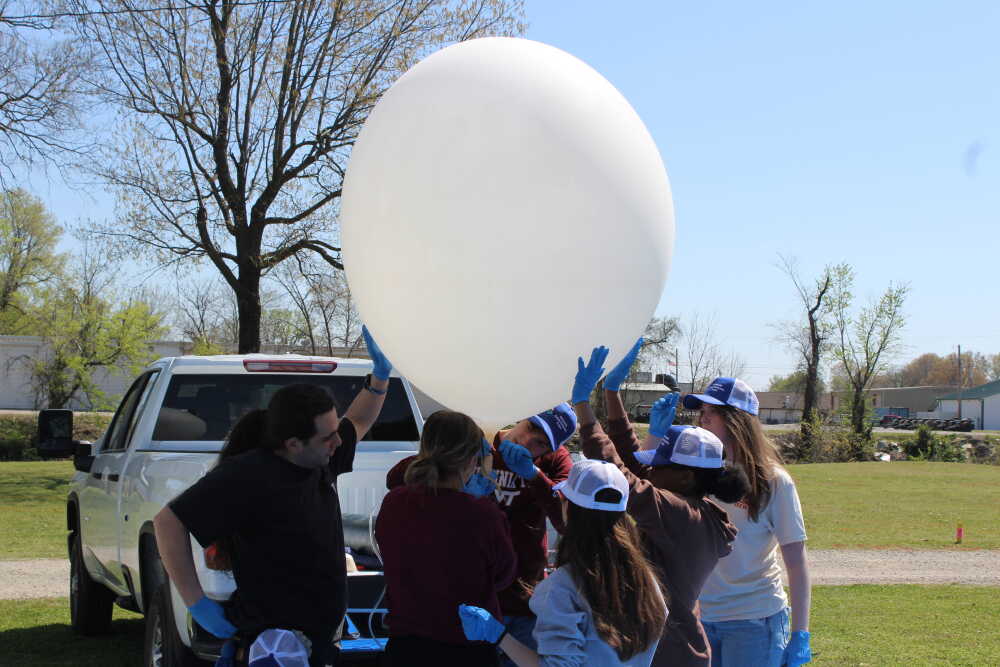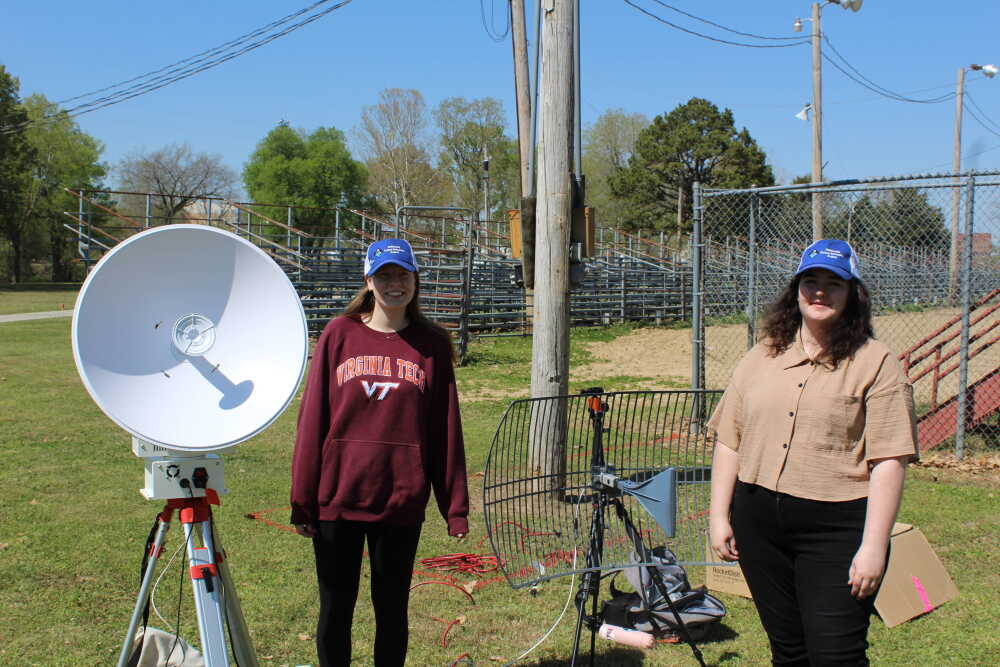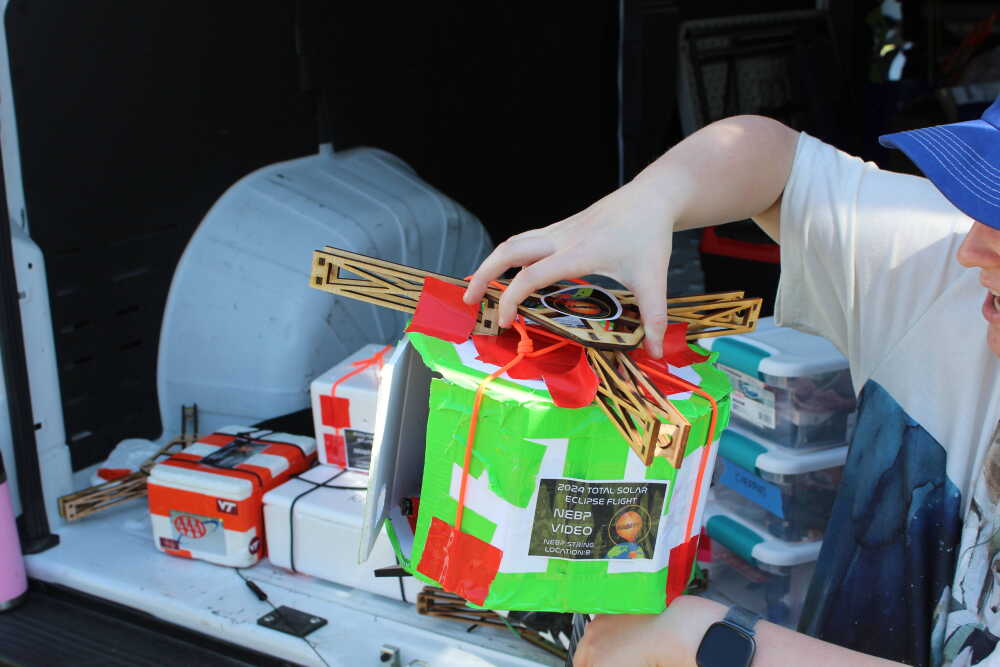
Students delicately handle a practice balloon
DAR/Joe McGraw
A team from Virginia Tech demonstrated the intricacies of high-altitude ballooning Saturday at Clinton Park. Two balloons attached to flight lines will launch from either Salem, Arkansas, or Thayer, Missouri to live stream the eclipse.
Ginny Smith, team mentor and 15-year ballooning veteran, oversaw the students inflating two practice balloons and preparing the payloads. The practice inflatables were just 300 gram capacity while the ones on game day will take 2,000 grams of helium.
The students delicately handled the balloons with latex gloves as they filled with gas. Smith said the oils from the skin can damage the latex of the balloon, causing premature rupturing.
Juniors Abby Decosta and Erika Ashley stated the ground team will use an RFD900 radio while stationed at Three Rivers College in Poplar Bluff to communicate with the high-altitude craft. Next to the RFD900 receiver was another dish the pair affectionately called “Shirley.”

Erika Ashley and Abby Decosta exhibit the RFD900 receiver and "Shirley"
DAR/Joe McGraw
Shirley receives the video feed from the camera payload for the live stream.
“We’re tested and ready to go,” Decosta affirmed.
Both Decosta and Ashley said the experience gained from participating in the ballooning project has earned them prestigious internships.
Smith said she taught the team, “from the ground up.”
None of the roughly 20-student team had prior experience with ballooning. While the ground team will track the balloons, it can be a surprise where they land.
Smith joked, “Sometimes it lands in a 60-foot tall tree. Sometimes it lands in an open field.”
The two flights for the eclipse will mark her 30th and 31st balloon launches. Both will be carrying a mixture of payloads including streaming cameras, Geiger counters, and material test strips.

The NEBP live stream camera payload with arms for attaching stabilizing fins
DAR/Joe McGraw
The National Eclipse Balloon Project, funded by NASA, only provided the streaming camera payload. The rest are student-designed and planned.
Flight director Priya Karki said, “All payloads are ready to go.”
Update April 8th:
Research associate Kevin Sterne gave an update Monday on how the launch went.
“Things went pretty well. We kept our timeline,” he affirmed.
While one balloon popped early at 5-6,000 feet, the other craft made it to 90,000 feet, according to Sterne. He said the team had to deal with higher than expected winds.
Sterne praised the efforts of the team and the number of the public who turned out to view the demonstrations.
“Everybody had a great time,” he stated.
While Sterne was disappointed one of the balloons deflated prematurely, he said members took the setback in stride.
“It’s all part of the process,” he concluded.
The livestream can be found for replay on the team’s YouTube page called HAB@VT.



